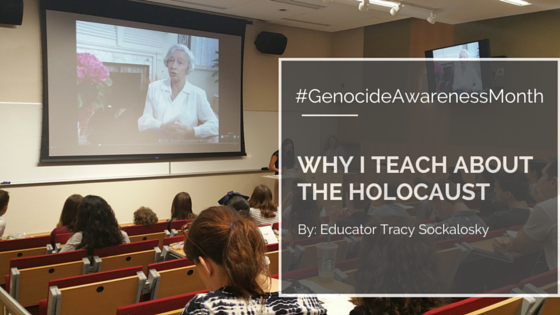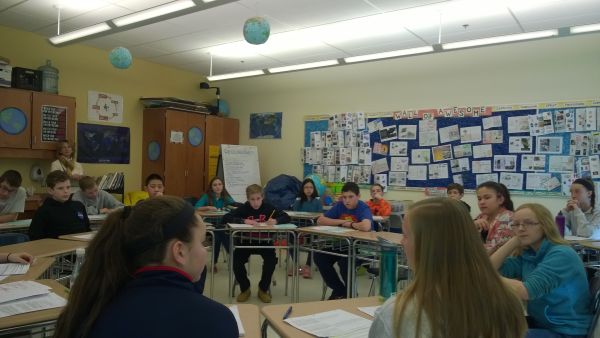Why I Teach about the Holocaust

Over the course of the last twelve months, my sense of urgency and determination has only been reinforced. There seems to be increased violent extremism plaguing the world, countless lives have been lost as a result of hatred and bigotry, and we are embroiled in a presidential campaign with rhetoric that belies acceptance and tolerance. Teaching students about the events of the Holocaust is as important now as it has ever been.
The challenge for any teacher is to determine how to match the learning needs of his or her students, with the breadth of the content, and the confines of learning time. Teaching the Holocaust to 7th grade students adds several additional layers of complexity:
What background information is essential? Is the material appropriate for 12 year olds or is too graphic or mature in nature? How do I balance the abundance of information and detail with the opportunity to reflect? And most importantly, how do I ensure that the study of Holocaust is not one of cause and effect, of facts and data, but rather, one of emotion and human stories?
This year I focused on eyewitness testimony to teach the Holocaust and it changed the experience for my students and for me. Why read details and facts when what I want students to gather is the emotion and complexity of the Holocaust? With testimony, students are gaining both an understanding of the events of history, but also the raw and powerful emotions that cannot be gleaned from text alone. Paired with both IWitness activities, and other projects and lessons, testimony humanizes the experience of the Holocaust allowing student to comprehend that these are real people; and that this is real emotion and that this actually happened. Ideally students could hear testimony directly from survivors visiting classrooms, as my students were fortunate enough to experience this year, but as the survivor population ages, recorded testimony becomes our best choice.

I recently concluded our unit of study with a Socratic Seminar. The theme of the discussion was why we must learn about and remember the Holocaust. Students were tasked with two close reading/close viewing tasks. The first was the 1986 Nobel Peace Prize acceptance speech by Elie Wiesel and the second was the speech Roman Kent delivered at the 70th Anniversary of the liberation of Auschwitz commemoration ceremony. My students were told to come prepared with notes from both speeches, as well as thoughts/connections from Holocaust survivor testimony in IWitness including testimony featured in the activity Information Quest: Kristallnacht. As well as the experiences told from the two Holocaust survivors that spoke to my class, Murray Jaros, grandfather of one of my students and survivor of the story shared in the movie, Defiance, and Izzy Arbeiter, Auschwitz survivor who I first met on the Past is Present trip.
I had hoped that the students would arrive with notes to engage in good discussion, but my expectations were clearly too low, as what happened in those conversations was enough to make me teary on a number of occasions.
Below are a few quotes some of my incredible students shared during the Socratic Seminar discussions:
Lauren - “If we forget, and don’t continue to learn, all we have of the survivors are the words on paper.”
Maya – “Right. That’s why it is so important to here testimony from survivors.”
Nolan – “When we read a story, we fill in the details with what we want it to be. But when we hear a survivor’s story, we can’t do that because nothing about the Holocaust is what we want it to be. The testimony fills in all the details.”
Nathan – “It is incomprehensible to the brain, no matter how many pictures or words, we will never be able to understand their pain. That’s why we have to continue to learn about it and hear survivors’ stories.”
One year later I am still full of angst about my role to ensure that #neveragain and #beginswithme are more than buzzlines and twitter hashtags. Through the use of testimony, and a focus on teaching empathy, history and social justice to my students, I know that we as teachers can make a difference. We must make a difference. And through the use IWitness and testimony, we are making a difference.